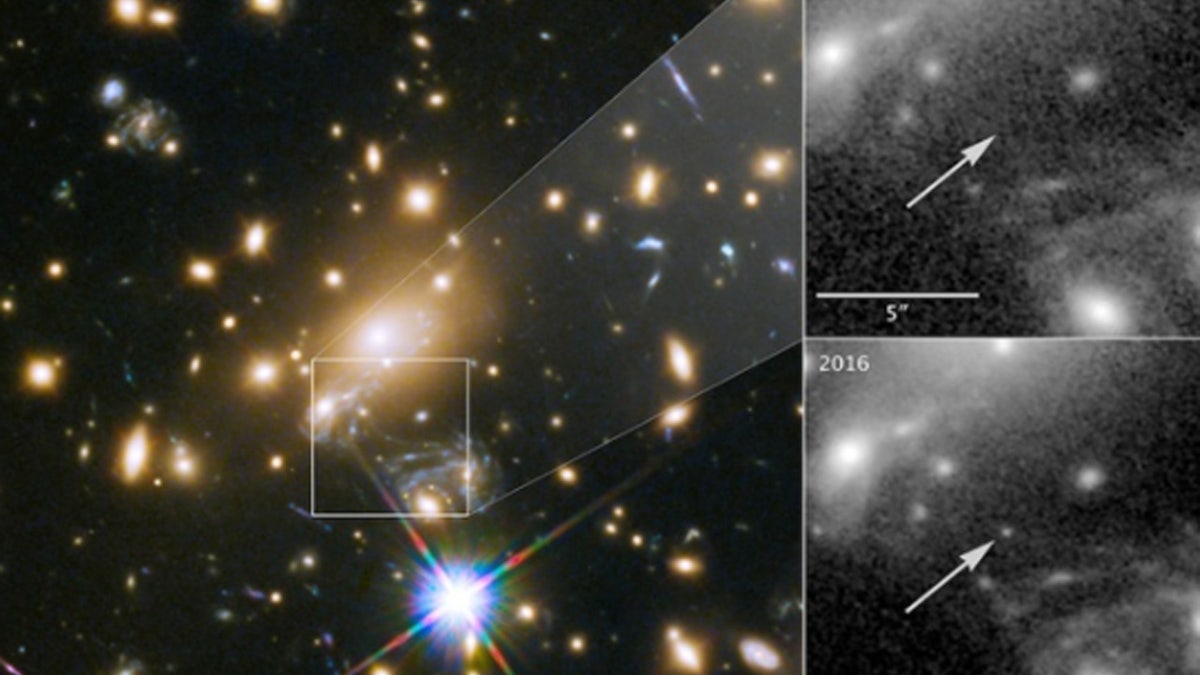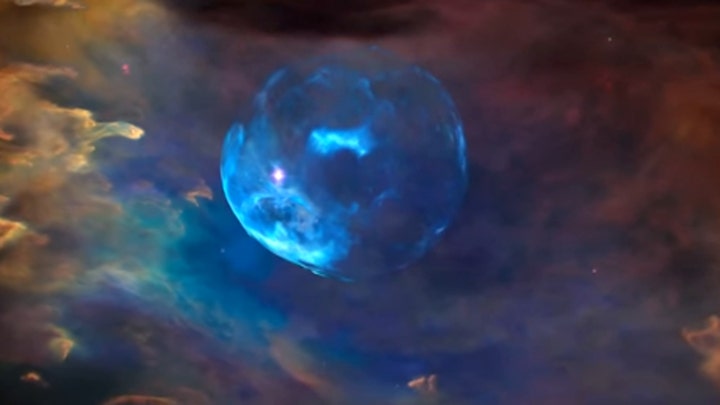
Icarus is the farthest individual star ever seen, NASA says. (NASA, ESA, and P. Kelly (University of Minnesota))
A team of researchers said in a published study that they discovered the farthest star ever seen in an image provided by the famed Hubble Space Telescope.
Astronomy magazine, citing Nature Astronomy, reported that the international team of researchers located the blue supergiant—nicknamed Icarus-- that emitted its light when the universe was one-third its current age.
The light was emitted 4.4 billion years after the Big Bang took 9 billion years to reach Earth.
"You can see individual galaxies out there, but this star is at least 100 times farther away than the next individual star we can study, except for supernova explosions,” Patrick Kelly, an astrophysicist at the University of Minnesota and lead author of the study, said.
Scientists were able to see the star due to gravitational lensing, which occurs when light rays diverge and bend back inward when passing a massive object, the report said.
NASA described gravitational lensing as a “massive cluster of galaxies acts as a natural lens in space, bending and amplifying light. Sometimes light from a single background object appears as multiple images. The light can be highly magnified, making extremely faint and distant objects bright enough to see.”
Astronomy reported that the discovery could shed light on dark matter.

